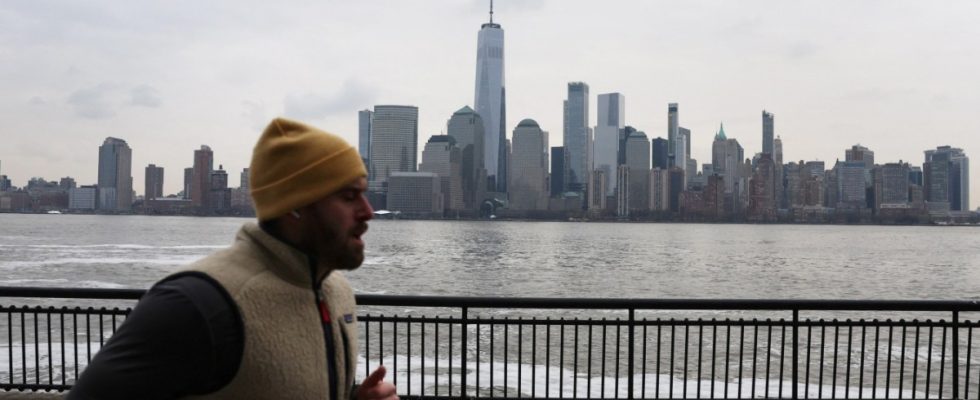Year after year, sea levels rise and increase the risk of flooding for coastal regions and their residents around the world. Now a study shows that at the same time, large areas of land along the US East Coast are sinking – in some cases significantly. Densely populated cities such as New York, Baltimore and Norfolk are also affected. There, the ground movement not only increases the risk of flooding, but it also threatens the sometimes dilapidated infrastructure – buildings, pipelines, roads, railway tracks and even runways at large airports.
“The problem is not just that the land is sinking,” explains study author Leonard Ohenhen from the University of Virginia Tech in Blacksburg. “The problem is that the hotspots of sinking land directly overlap with centers of population and infrastructure.” The geoscientist and his colleagues give examples in the journal PNAS Nexus the major New York airports JFK and LaGuardiawhere the annual subsidence rate is more than two millimeters.
For the entire US east coast, the team evaluated ground movements along a 100 kilometer wide strip using radar measurements from satellites for the period from 2007 to 2020. Results: Large parts of the area are sinking by more than two millimeters per year, some – up to 3,700 square kilometers – by more than five millimeters, and in places even by more than ten millimeters. In New York, Baltimore and Norfolk the rate is predominantly one to two millimeters per year. The main causes are the compaction of the subsoil, the extraction of groundwater and mining.
Flooding even without sea level rise
The subsidence, in combination with rising sea levels – currently around four millimeters per year – could triple the flood risk for some areas within a few decades, the group writes. Even if there were no rising sea levels, continued ground subsidence in some coastal regions could lead to irreversible flooding and more regular flooding.
However, it is said that the subsidence rate is not necessarily a decisive factor in the damage to the infrastructure. It is problematic, for example, when neighboring areas sink at different speeds, which leads to imbalances. What makes this even more difficult is that the surface is rising in some areas of the East Coast – such as the Chesapeake Bay near Baltimore. This is considered a late consequence of the glaciers that disappeared around 10,000 years ago.
Some areas in German coastal regions are also sinking significantly, as Thomas Lege from the Federal Institute for Geosciences and Natural Resources (BGR) in Hanover explains. The marshland areas are particularly affected – i.e. areas with alluvial, mostly very moist and unconsolidated sediment deposits, for example in the estuaries of the Elbe and Weser. There are even larger subsidences of ten millimeters or more annually over gas fields approximately to the west of the mouth of the Ems, says the head of the BGR department for hazard analyzes and remote sensing.
With the subsidence, the risk of flooding increases, says Lege, especially if you think about longer periods of time over several decades. “But the connection between sea level rise and soil subsidence is taken into account when building dikes,” emphasizes the expert. And when building roads or industrial areas over marshland, planning is often carried out in advance: areas are sometimes covered with meters of sand years before construction actually begins – “in order to pre-stress the unpaved ground, to squeeze it out like an underground sponge and thus anticipate future subsidence.”

